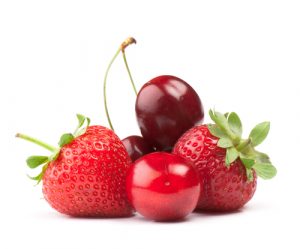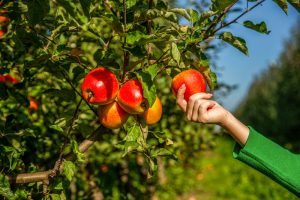Out-of-season food is not just expensive; it affects your health and the environment around you.
Supermarket prices are increasing exponentially, so consumers will go for non-perishable foods to prevent wastage and lower costs.
These cheaper alternatives are more affordable because the prime ingredients within the products can be mass-produced, resulting in foods that are low in price as well as nutrients.
Nutrition experts at Bulk.com have explored the benefits of eating seasonally and shared what foods you should be eating this season.
BENEFITS OF SEASONAL FOODS
Lower Costs
When produce is in season, they grow in abundance, which usually means there is an overstock of these products resulting in lower prices. When certain goods are not in season, they must be grown in managed conditions or be transported from other parts of the world. These processes require more maintenance and funds, which means an increase in the final selling price.
Nutrition
Seasonal foods are naturally more saturated in nutrients compared to their out-of-season counterparts. These seasonal foods are cropped at the optimal time, allowing them to grow naturally, resulting in nutrient-dense produce. Out-of-season produce must travel far to get to the supermarkets and then be purchased by consumers. This is why artificial chemicals such as preservatives and pesticides are used to prevent spoilage during transit and extend shelf life.
Taste
Seasonal food tastes better because it is cropped optimally, producing a riper and sweeter product. Since the produce is naturally growing in abundance, there is no need for artificial chemicals to be used to extend shelf life; these chemicals interact with the flavour and nutrients. Furthermore, the produce would not have travelled far, maximising freshness and flavour.
Supporting Local Farmers & Economy
Supporting local suppliers and farmers promotes a more sustainable way of living. Smaller farms are often more labour-intensive and use natural processes to grow produce, as growing out-of-season is more costly. Supporting local farmers results in a safer food supply and profits for your local community. As aforementioned, since there will be no travel expenses, prices for produce are reduced significantly.
Environmentally Friendly
Locally sourced produce means there will be a lower carbon footprint, as there is no pollution caused by shipping foods from one part of the world to another. In addition, fewer, if not no, pesticides are used, which can prevent pollution of water streams and ponds.
MAY – JUNE SEASONAL FOODS
 Samphire – this is in season between May and August. Samphire is known for its crisp texture and salty taste. This is great to eat raw in salads or cooked, which will reduce the saltiness. Samphire is a source of dietary fibre and can aid in digestion. It also has antioxidant properties, can improve bone health and boost your immune system.
Samphire – this is in season between May and August. Samphire is known for its crisp texture and salty taste. This is great to eat raw in salads or cooked, which will reduce the saltiness. Samphire is a source of dietary fibre and can aid in digestion. It also has antioxidant properties, can improve bone health and boost your immune system.
Wild Garlic – also known as ‘Ramsons’, Wild Garlic is high in vitamin A, vitamin C, iron, calcium, phosphorus and copper. It is also known for its antibacterial properties; studies have shown it can lower blood pressure. Wild Garlic starts to sprout flowers in April and can be harvested until the end of the season, June.
Artichokes – these are loaded with nutrients, including vitamins B6 and C. A single serving also contains 10g of fibre, which is excellent for digestive health and promotes bowel regularity.
Rhubarb – often considered a fruit, this is a vegetable. Rhubarb is high in vitamin K, vital for bone health and can prevent blood clotting. It also contains vitamin A, which can help fight free radicals that cause your skin to age prematurely.
Asparagus – this is in season from late February but peaks in April and May. Asparagus is high in vitamin E and antioxidants, which protect the skin from damage. It is also high in folic acid and is excellent for gut health.
Cucumbers – these are in season from mid-summer to mid-autumn, but you will find the best cucumbers in warmer conditions. These are great for those wanting to maintain or lose weight as they are very low in calories but high in nutrients. They are high in vitamins K, B and antioxidants, and they also promote hydration.
 Strawberries – these are in season from May to September. Strawberries are a great source of polyphenols which protects the body’s tissues from oxidative stress. They are also high in manganese, potassium, and vitamin C. Strawberries are particularly good for pregnancy as the high levels of vitamin C can help a foetus’ development.
Strawberries – these are in season from May to September. Strawberries are a great source of polyphenols which protects the body’s tissues from oxidative stress. They are also high in manganese, potassium, and vitamin C. Strawberries are particularly good for pregnancy as the high levels of vitamin C can help a foetus’ development.
Spinach – Spinach is high in zeaxanthin, which helps flush out free radicals in your body and can help reduce the risk of glaucoma and cataracts. Spinach is also high in iron, folate, and vitamins A, C, and K.
Cherries – these are a great source of fibre and are also low in calories. Cherries contain antioxidants and anti-inflammatory compounds and are very similar to Strawberries as they contain polyphenols. They are also a great source of anthocyanins, which not only give Cherries their colour but also help muscle recovery after a workout.
Tomatoes – these are in season from June to October. Besides vitamin C and K, Tomatoes are high in folate, vital for tissue growth and cell function – another great superfood to eat during pregnancy.
A nutrition expert from Bulk.com says: “It is clear that eating seasonally has numerous benefits that can impact the consumer and suppliers positively. It can also promote a healthy lifestyle and balanced diet by providing a variety of nutrient-rich produce that allow people to try new recipes and dishes.”
Knowing what foods to purchase each month can prevent wastage and allow people to plan what meals to make and ensure they get the most from their weekly or fortnightly grocery shopping. It can also prevent consumers from purchasing cheap, unhealthy processed foods.





